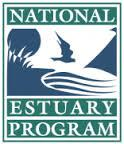Unit:National Estuary Program: Difference between revisions
From Indian River Lagoon Project
mNo edit summary |
mNo edit summary |
||
| (5 intermediate revisions by the same user not shown) | |||
| Line 2: | Line 2: | ||
|Name=National Estuary Program | |Name=National Estuary Program | ||
|Abbreviation=NEP | |Abbreviation=NEP | ||
|Description=The EPA's National Estuary Program (NEP) is a very successful community-based program designed to restore and maintain the ecological integrity of estuaries of national significance. The NEP is a non-regulatory program established by Congress and authorized by section 320 of the Clean Water Act in 1987. It is a unique voluntary program that operates through partnerships among EPA and other Federal, State, and local organizations; industry; academia; environmental and business groups; and community residents. Currently, there are 28 NEPs located along the Atlantic, Gulf, and Pacific coasts and in Puerto Rico each with a director and staff, working with local stakeholders to improve the health of their estuary - it’s waters, habitats, and living resources. Each NEP has a Management Conference (MC) that consists of diverse stakeholders and uses a collaborative, consensus-building approach. The MCs develop and implement Comprehensive Conservation and Management Plans (CCMP), long-term plans that contain actions to address water quality and living resource challenges and priorities. The EPA provides annual funding, national guidance and technical assistance to the local NEPs.The Indian River Lagoon was nominated as an Estuary of National Significance and joined the NEP under the management of the St. Johns River and South Florida Water Management Districts in 1990. Today, the Indian River Lagoon NEP Management Conference is the IRL Council, a special district of Florida. | |||
|Street=Office of Wetlands, Oceans and Watersheds1200 Pennsylvania Avenue, N.W.Mail Code 4204M | |||
|Description=The National Estuary Program (NEP) is | |||
Currently, 28 | |||
Each NEP has a Management Conference (MC) that consists of diverse stakeholders and uses a collaborative, consensus-building approach. The MCs develop and implement Comprehensive Conservation and Management Plans (CCMP), long-term plans that contain actions to address water quality and living resource challenges and priorities. The EPA provides annual funding, national guidance and technical assistance to the local NEPs. | |||
The Indian River Lagoon was nominated as an Estuary of National Significance and joined the NEP | |||
|Street=Office of Wetlands, Oceans and | |||
Mail Code 4204M | |||
|City=Washington | |City=Washington | ||
|State=DC | |State=DC | ||
|Country=United States | |Country=United States | ||
|Zip=20460 | |Zip=20460 | ||
|Phone=202-566-1146 | |||
|Email=ow-owow-internet-comments@epa.gov | |Email=ow-owow-internet-comments@epa.gov | ||
| | |Website=https://www.epa.gov/nep | ||
|Facebook=https://www.facebook.com/sharer.php?u=https://www.epa.gov/nep&t=National%20Estuary%20Program%20%28NEP%29 | |Facebook=https://www.facebook.com/sharer.php?u=https://www.epa.gov/nep&t=National%20Estuary%20Program%20%28NEP%29 | ||
|Twitter=https://twitter.com/intent/tweet?original_referer=https://www.epa.gov/nep&text=National%20Estuary%20Program%20%28NEP%29&url=https://www.epa.gov/nep&via=EPA&count=none&lang=en | |Twitter=https://twitter.com/intent/tweet?original_referer=https://www.epa.gov/nep&text=National%20Estuary%20Program%20%28NEP%29&url=https://www.epa.gov/nep&via=EPA&count=none&lang=en | ||
| | |Image=org-logo-national-estuary-program.png | ||
|Founded=1987 | |||
|Focus=National Estuaries | |||
|Region=United States | |||
|Statement=The NEP is a collaborative, efficient, and adaptable ecosystem-based network of organizations that protects and restores 28 estuaries of national significance. | |||
|Parent=Office of Wetlands Oceans and Watersheds | |||
|Child=Indian River Lagoon National Estuary Program | |||
|Partner=IRL Council; Association of National Estuary Programs | |||
|Type=Government | |Type=Government | ||
|Government Division=United States Government | |Government Division=United States Government | ||
| Line 34: | Line 27: | ||
|US Division5=EPA Office of Water | |US Division5=EPA Office of Water | ||
|US Division6=EPA Office of Wetlands Oceans and Watersheds | |US Division6=EPA Office of Wetlands Oceans and Watersheds | ||
|Poster=Admin | |Poster=Admin | ||
| | |Posted=20191128094348 | ||
}} | }} | ||
[[Category:EPA National Estuary Program]] | |||
Latest revision as of 13:06, December 14, 2020
National Estuary Program (NEP)
The EPA's National Estuary Program (NEP) is a very successful community-based program designed to restore and maintain the ecological integrity of estuaries of national significance. The NEP is a non-regulatory program established by Congress and authorized by section 320 of the Clean Water Act in 1987. It is a unique voluntary program that operates through partnerships among EPA and other Federal, State, and local organizations; industry; academia; environmental and business groups; and community residents. Currently, there are 28 NEPs located along the Atlantic, Gulf, and Pacific coasts and in Puerto Rico each with a director and staff, working with local stakeholders to improve the health of their estuary - it’s waters, habitats, and living resources. Each NEP has a Management Conference (MC) that consists of diverse stakeholders and uses a collaborative, consensus-building approach. The MCs develop and implement Comprehensive Conservation and Management Plans (CCMP), long-term plans that contain actions to address water quality and living resource challenges and priorities. The EPA provides annual funding, national guidance and technical assistance to the local NEPs.The Indian River Lagoon was nominated as an Estuary of National Significance and joined the NEP under the management of the St. Johns River and South Florida Water Management Districts in 1990. Today, the Indian River Lagoon NEP Management Conference is the IRL Council, a special district of Florida.
The NEP is a collaborative, efficient, and adaptable ecosystem-based network of organizations that protects and restores 28 estuaries of national significance.
Focus: National Estuaries
Region: United States
Founded: 1987
Hierarchy
Government Organization
United States Government; Executive Branch; Environmental Protection Agency; EPA Office of Water; EPA Office of Wetlands Oceans and Watersheds
Affiliations
Parent Organizations: Office of Wetlands Oceans and Watersheds
Subsidiaries: Indian River Lagoon National Estuary Program
Partners: IRL Council; Association of National Estuary Programs
Contact
National Estuary Program
Office of Wetlands, Oceans and Watersheds1200 Pennsylvania Avenue, N.W.Mail Code 4204M
Washington, DC 20460
Phone: 202-566-1146
Email: ow-owow-internet-comments@epa.gov
Website: https://www.epa.gov/nep
Disclaimer: This information is for organizational purposes only. The presence of an Organization's information on this Website should not be viewed as an endorsement of the Website by the Organization. Nor should an Organization's presence on the Website be viewed as an endorsement of the Organization by the Website.
